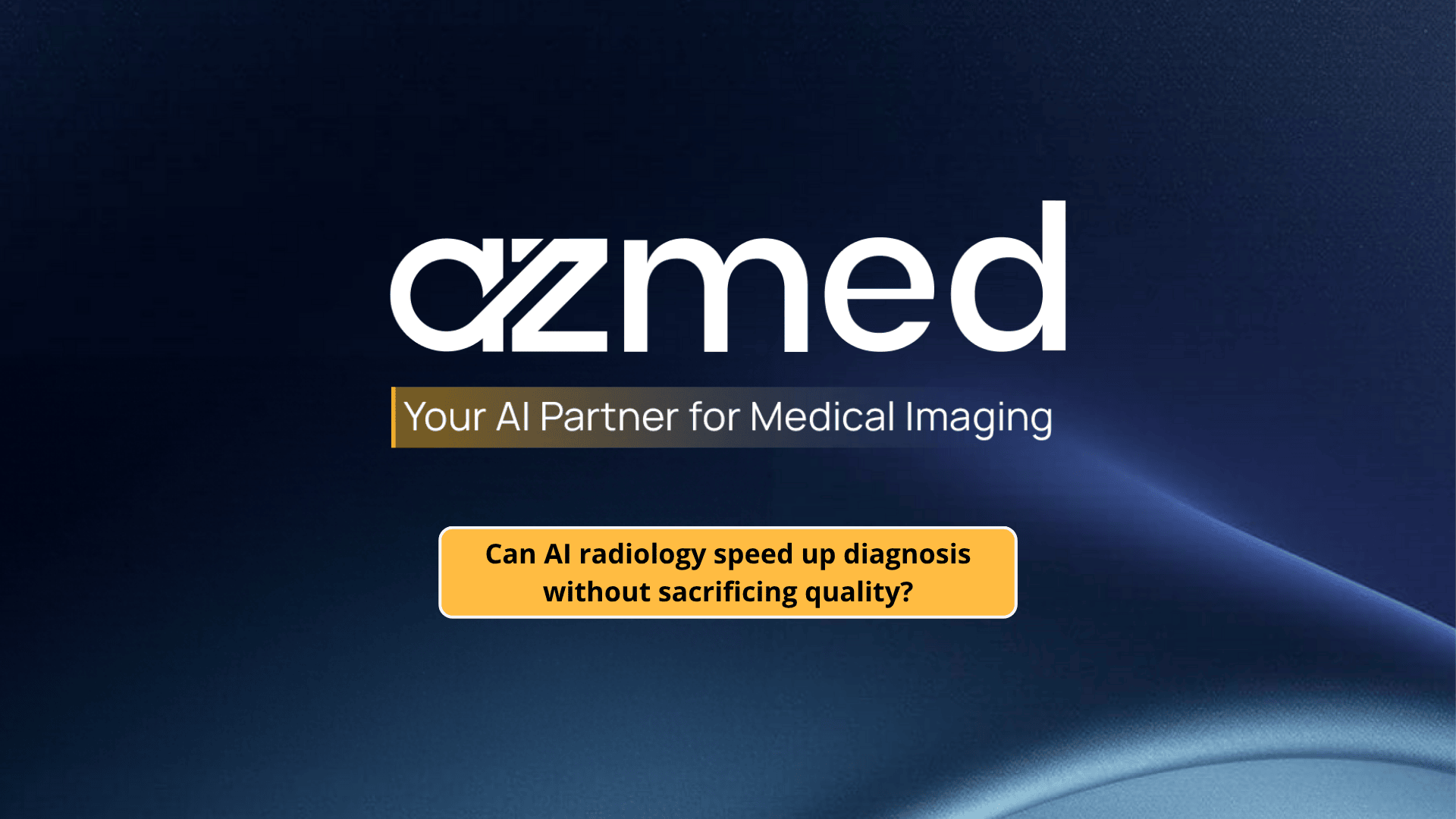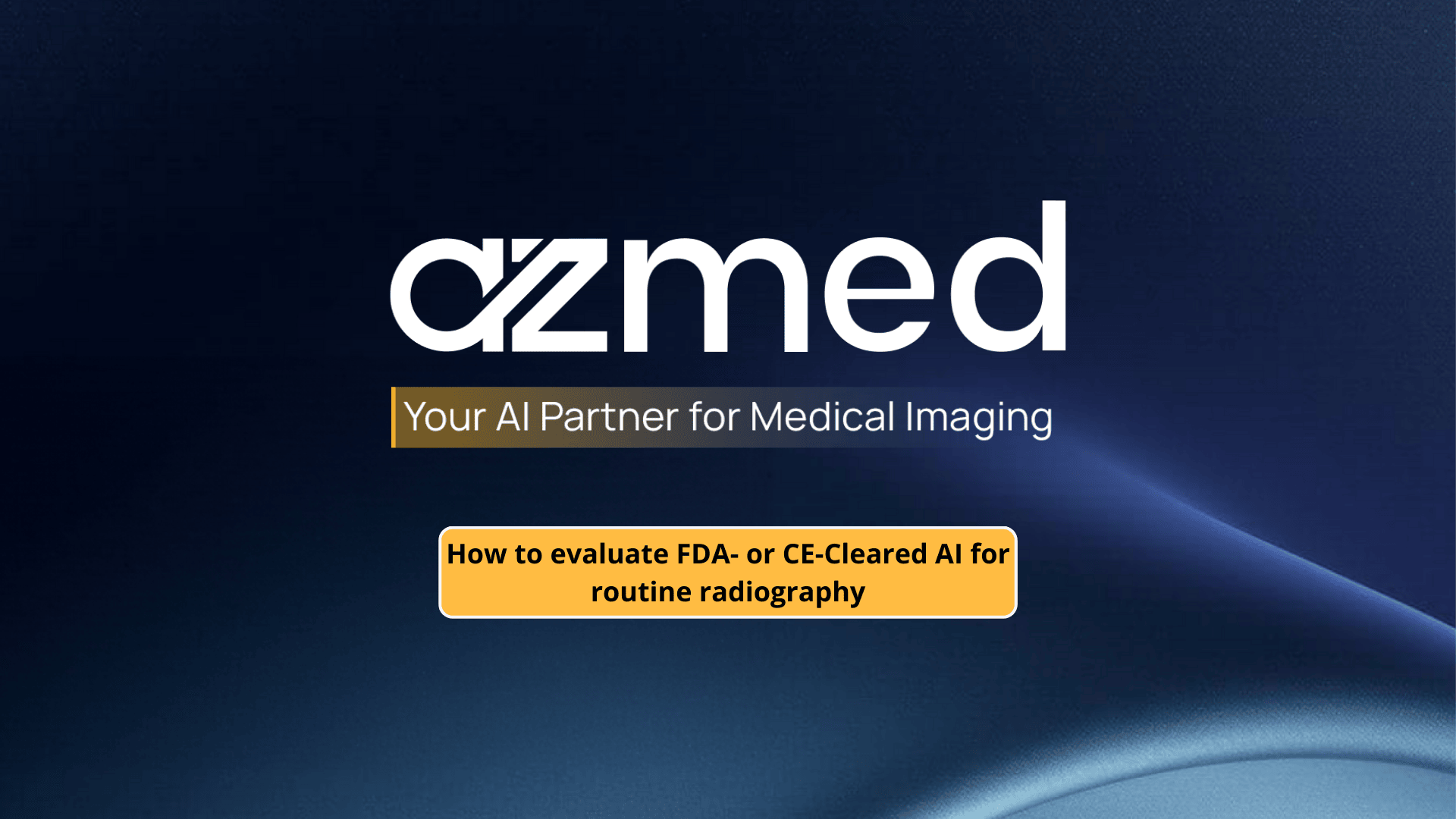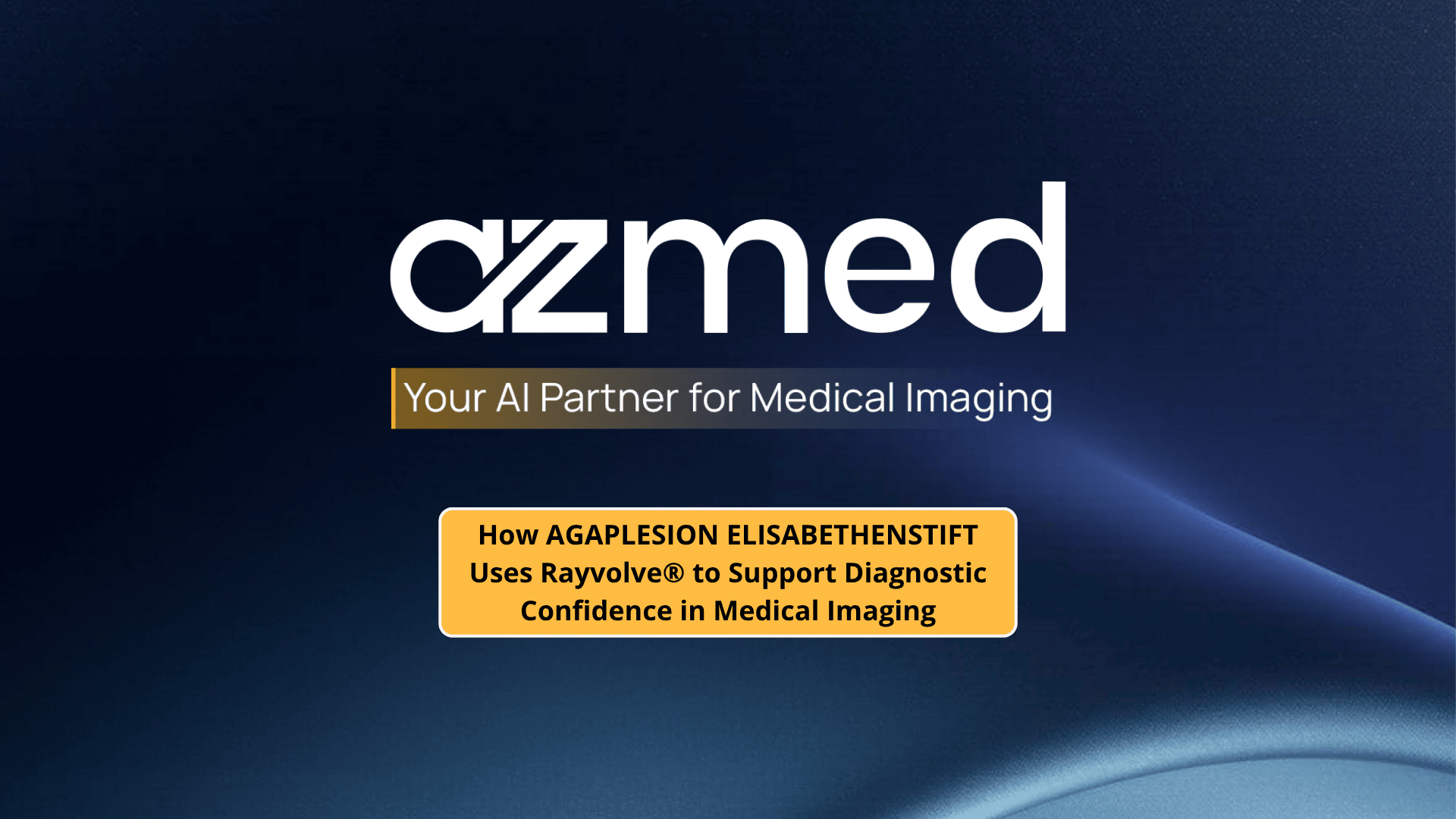Radiology departments worldwide are facing increased numbers of imaging studies than ever. On the other hand, they are also facing reduced staff, increased caseloads, and increased risks of making mistakes.
Therefore, it is no surprise that many departments are looking to install artificial intelligence in radiology to assist with speeding up diagnosis. But while speed is crucial, it should not be at the cost of diagnostic precision.
The question most medical professionals are asking is straightforward: Can AI enable radiologists to speed up diagnosis yet maintain identical high levels of patient care?
The quick answer is yes, but only if the proper tools are available.
Why is clinical validation essential to ensure AI radiology doesn’t sacrifice quality for speed?
AI tools can certainly speed up diagnosis, but they shouldn’t come at the expense of patients’ safety. That’s why the tools you use in your department should meet clinically validated radiology AI standards to ensure they are accurate. While no AI tool is 100% accurate and would need the radiologist's input, reducing false positives is a key metric to consider.
Take AZmed’s Rayvolve® AI Suite for example. The AI tools in this suite have been rigorously validated by leading institutions worldwide and consistently deliver high‑fidelity image interpretation and dependable triage support.
With more than 30+ studies and 10+ peer‑reviewed publications backing its performance, and over 15 million X‑rays analyzed in the past year, the Rayvolve® AI Suite helps radiologists speed up their diagnosis without sacrificing quality.
Let’s understand this in more detail.
Top 4 use cases that prove AI radiology can deliver both speed and accuracy
AI radiology tools can help you deliver both speed and accuracy. But the key is to choose the right ones. Here’s how the tools in AZmed’s Rayvolve® AI Suite are helping 2,500+ healthcare centers across the globe achieve this.
Use case #1: AZtrauma
AZtrauma is the leading AI radiology solution for detecting fractures, dislocations, and joint effusions on X-rays. It provides highly reliable AI for fracture X-rays, supporting trauma and emergency room teams in high-pressure environments.According to a clinical study, AZtrauma has achieved a stand-alone accuracy of 0.986, sensitivity of 0.987, and specificity of 0.885, and high accuracy (> 0.95) across stratification for body part, age, gender, radiographic views, and scanner type.
Use case #2: AZchest
The next AI radiology tool in the suite is AZchest.* It helps radiologists automatically categorize, detect and report the main cardiac and lung abnormalities on X-rays. AZchest is a trusted AI solution for chest X-ray.A clinical study on 9,000 cases suggests that AZchest offers up to 35.8% reduction in reading time and 11.4% sensitivity per case, proving that radiologists don’t have to sacrifice quality for speed while using AI tools.
Use case #3: AZmeasure
Manual measurements consume a lot of time and concentration for radiologists. AZmeasure helps reduce manual workload by delivering automated characterization of osteo-articular geometries, including lengths and angular positions.
This frees up radiologists to focus on interpretation, shortens report turnaround time, and supports early detection in musculoskeletal assessments.
Use case #4: AZboneage
AZboneage is yet another AI tool that helps speed diagnosis by providing advanced automated calculation of the bone age of pediatric patients, based on the Greulich & Pyle method. The tool can be seamlessly integrated into clinical workflows, and the product also performs the statistical comparison between the bone and chronological age of the young patients.
The four use cases highlight how the right AI radiology tools can help radiologists with faster diagnosis, without sacrificing the quality of patient care. But the benefits of using AI in radiology aren’t just limited to speed.
What are the benefits of AI in Radiology beyond increasing speed?
The benefits of AI extend beyond faster reporting.
By facilitating triage in imaging processes, AI assists in bringing out priority cases like fractures or pneumothorax. The prioritization helps in drawing immediate attention of radiologists towards critical cases..
While doing so, AI automates repetitive tasks, reducing the burden on radiologists. They spend fewer hours on mundane measurements and more on actual interpretation. This enables them to decrease their cognitive load, decrease burnout, and yield improved diagnostic accuracy over prolonged shifts.
Read our detailed guide on the benefits of AI in radiology to know more.
Why Radiology departments trust AZmed to balance speed and accuracy in AI diagnosis
Radiology departments don’t have to choose between faster diagnosis and accuracy when choosing the right AI tools. Clinically validated, workflow-integrated tools like the Rayvolve® AI Suite show that it is possible to achieve both, helping radiologists handle rising exam volumes without sacrificing diagnostic precision or patient safety.
With more than 2,500 deployments worldwide, AZmed’s Rayvolve® AI Suite has proven its impact across trauma imaging, pediatric imaging, chest radiography, and general radiography within large imaging networks.
Our plug-and-play integration into PACS/RIS workflows ensures seamless adoption without adding clicks or slowing radiologists down. And with FDA clearance, CE marking, and peer-reviewed validation, radiology leaders can trust the speed and accuracy of our solutions.
If your imaging department is looking to accelerate workflows while preserving accuracy, book a demo today and see how Rayvolve® AI Suite can support your team.
Regulatory mentions:
EU - Rayvolve: Medical Device Class IIa in Europe (CE 2797) in compliance with the Medical Device Regulation (2017/745). Rayvolve is a computer-aided diagnosis tool, intended to help radiologists and emergency physicians to detect and localize abnormalities on standard X-rays.
* AZchest is CE-marked for detection of abnormalities on chest X-rays such as: consolidation, pleural effusion, pneumothorax, cardiomegaly, acute pulmonary edema, ribs fractures and pulmonary nodules. It’s also FDA-cleared for two applications: detection of lung nodules (with Rayvolve LN) and notification and triage for pneumothorax and pleural effusion (with Rayvolve PTX-PE)
US - Medical device Class II according to the 510K clearances. Rayvolve: is a computer-assisted detection and diagnosis (CAD) software device to assist radiologists and emergency physicians in detecting fractures during the review of radiographs of the musculoskeletal system. Rayvolve is indicated for the adult and pediatric population (≥ 2 years).
Rayvolve PTX/PE: is a radiological computer-assisted triage and notification software that analyzes chest x-ray images of patients 18 years of age or older for the presence of pre-specified suspected critical findings (pleural effusion and/or pneumothorax).
Rayvolve LN: is a computer-aided detection software device to assist radiologists to identify and mark regions in relation to suspected pulmonary nodules from 6 to 30mm size of patients of 18 years of age or older.
Caution: The data mentioned are sourced from internal documents, internal studies and literature reviews. Carefully read the instructions for use before use.
AZmed 10 rue d’Uzès, 75002 Paris - www.azmed.co - RCS Laval B 841 673 601
© 2025 AZmed – All rights reserved. MM-25-41



